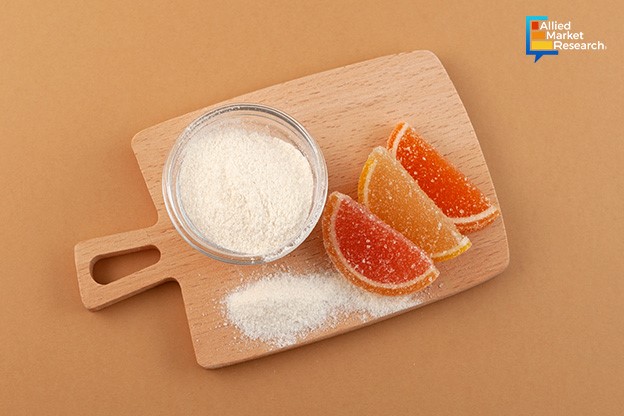Food Hydrocolloids: Why Are Food Processing Companies Focusing on Investing in Food Additives?

3 Apr
2024
Key takeaways:
- Introduction
- Advantages of food hydrocolloids
- Innovative product launches in the sector
As the pace of urbanization and industrialization has increased across the developed and developing economies, several socio-economic, cultural, behavioral, political, and technological changes have been recorded in the people of these countries. As a result of this, a significant rise in disposable incomes of people across the globe has been recorded. Globalization has further improved the standard of living of people in these countries. On the cultural front, the lifestyle and preferences of people have also changed due to industrialization. Both these factors have had an impact on the eating habits and the nature of food processing industries in these economies. An overall growth in processed and packaged food has been seen in these countries which has led to a surge in the adoption of substances whose addition enhances the taste and quality of packaged food products. Food hydrocolloids are one such example of food additives.
Analyzing the role of food hydrocolloids in modern food processing industries
Hydrocolloids are hydrophilic, heterogeneous groups of polymers that, when mixed with water, form gels and viscous dispersions. These long-chain, water-soluble, hydrophilic polymer molecules are extensively used by modern food processing industries to improve the stability and enhance the texture of the food product. Furthermore, they also enhance the sensory properties such as flavor, microstructure, and taste of the food product. Thus, hydrocolloids are widely used in food processing industries as edible coatings, stabilizers, gelling agents, emulsifiers, foaming agents, thickeners, etc. In some cases, hydrocolloid agents are added to food items as a replacement for animal fats, thereby reducing the cost of the product.
Nowadays, canned items, fruit juices, sauces, jams, jellies, confectionery items, ice creams, marmalades, dairy products, candies, etc., contain some or the other type of food hydrocolloids. To suit the diverse types of the products, different food hydrocolloids have been developed which can be added to these food items without disturbing their taste and texture. One such example of hydrocolloids is gelatin; a common thickening and gelling agent, gelatin is widely used in cosmetics and pharmaceutical industries, apart from food processing industries.
Gelatin is a common ingredient in oil-free mayonnaise as it imparts a shiny appearance and a smooth texture. The flavor-binding ability of gelatin makes it a necessary ingredient in the preparation of cooking sauces and ketchup. However, the biggest area of application for gelation is in the preparation of different desserts. Gelatin offers desserts a creamy and smooth texture, which is why they are prominently used in whipping creams and gels.
Apart from gelatin, two types of galactomannans, viz., guar gum and locust bean gum are also some of the commonly used hydrocolloids. Guar gum, for instance, is used in ice creams and ice pops to increase their heat-shock resistance. It is also commonly added to dairy products like cheeses, yogurt, and curds to enhance their texture and chewiness. Guar gum, a basic ingredient of pie fillings, helps increase the volume of the pie and prevents it from shrinking and cracking, thereby improving the food product’s shelf life. A major reason behind the rising popularity of guar gum is its extensive use in dietic and low-carbohydrate food products and beverages. On the other hand, locust bean gums are mainly used in the preparation of soup bases, sauces, salad dressings, frozen vegetable batter, and ketchup. Locust bean gums have a high swelling potential and an increased water-holding capacity which makes them perfect food additives for bakery products. Along with the hydrocolloids mentioned above, food additives such as carrageenan, agar, alginates, etc., are also regularly used in food processing industries.
Understanding the dynamics of the food hydrocolloids industry
The food hydrocolloids industry is a highly competitive sector with various multinational food processing giants launching their products to establish their supremacy. For instance, in February 2021, Jungbunzlauer, a biodegradable ingredients company, announced the launch of TayaGel®, a high acyl gellan gum. Food additives such as gellan gum are widely used in the manufacturing of various dairy products. Thus, the product launch is expected to help the company address the demands of dairy products comprehensively in the processing industry.
Similarly, in March 2023, Meron Group, a food additives company, announced the launch of new instant dessert premixes for the catering industry. Meron Group is one of the largest exporters of marine hydrocolloids and the product launch is anticipated to strengthen its hold over the industry in the coming period.
To conclude, the increasing demand for packaged and processed foods across the globe is projected to increase the usage of food hydrocolloids by various food processing industries. These hydrocolloids improve the texture and taste of food products which are estimated to help the industry flourish. Product launches by leading food processing companies are also predicted to contribute to the growth of the domain.
For insights into how your business can capitalize on the opportunities offered by the industry, feel free to contact us.

Akhilesh Prabhugaonkar
Author's Bio- Akhilesh Prabhugaonkar holds a bachelor’s degree in Electronics Engineering from the reputed Vishwakarma Institute of Technology. He has a special interest in the fields of forensics, world history, international relations and foreign policy, sports, agriculture, astronomy, security, and oceanography. An ardent bibliophile and melophile, Akhilesh loves to write on topics of his interest and various other societal issues. This love for writing made him enter the professional world of content writing and pursue his career in this direction.
How Investing in the Beta Glucan Industry is a Profitable Move for Your Functional Food Business?
Avenue: Entire Library membership of Allied Market Research Reports at your disposal
- Avenue is an innovative subscription-based online report database.
- Avail an online access to the entire library of syndicated reports on more than 2,000 niche industries and company profiles on more than 12,000 firms across 11 domains.
- A cost-effective model tailored for entrepreneurs, investors, and students & researchers at universities.
- Request customizations, suggest new reports, and avail analyst support as per your requirements.
- Get an access to the library of reports at any time from any device and anywhere.
Related Post
-
How are Submarine Cables Transforming Global Connectivity with Enhanced User Experience?
-
Endoscopy Procedures: Transformations in Techniques and Applications
-
AI-Powered Video Analytics: How the Product Actually Works for enterprises
-
Painting Robots: Transforming Precision Coating and Creative Applications
-
Innovations in Pharmacovigilance Systems Advancing Patient Safety
-
Understanding Edge Security: Keeping Data Safe Near the Source
-
Exploring the Use and Advancements of 3D Laser Scanners in Professional Applications
-
Reinforcing Industrial Controls with Smarter Tools and Training








